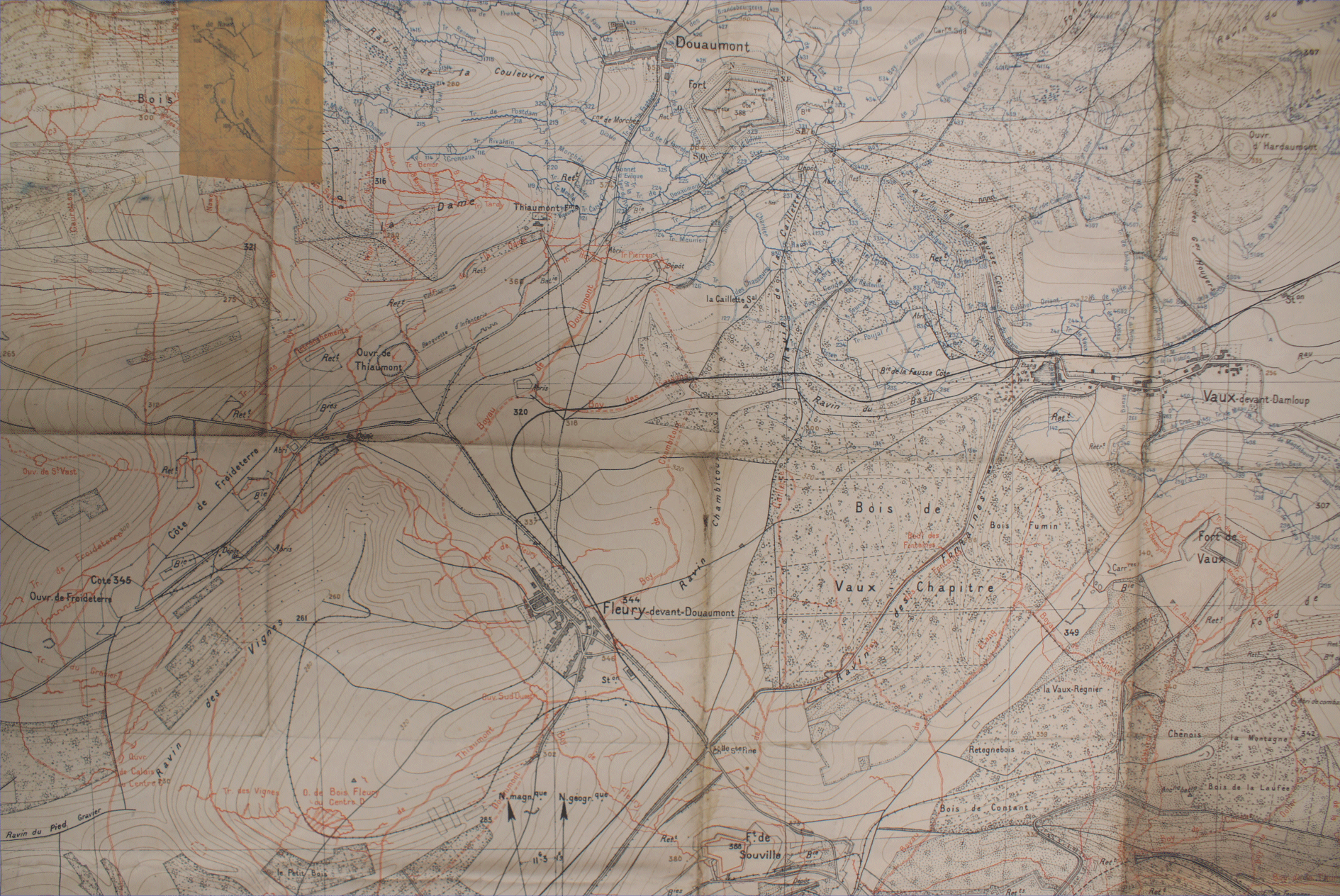At the outbreak of war in the summer of 1914, the German
advance created a salient deep into France, the east-west
portion of which ended at Verdun. South of Verdun, another German
advance created the St. Miheil Salient, constricting the supply of
Verdun to one road, later named the Sacred Way. A pre-war system of
forts protecting Verdun had been stripped of their artillery to equip
the mobile armies. Perhaps all of these things contributed to the
German decision to attack Verdun. Using new tactics, German General
Falkenhayn planned to capture terrain important to the French -
important for strategic reasons or for national pride. Then, it was
hoped, the French would bleed themselves white in costly
counterattacks, with German artillery being especially deadly.
Falkenhayn promised to halt his attacks if casualties proved equal or
greater than French ones. Like many other battles of the Western
Front, the promise was a hollow one. Beginning on Febraury 21, 1916,
the fighting continued to December 18, including the French
counterattacks. The joint British and French attacks at the Somme were
designed to ease the pressure at Verdun.
Estimates
vary, but something like 380,000 French and 320,000 German casualties
are frequently cited, with 230,000 of them dead. The land is now a
"Red Zone", too dangerous to restore to its original agricultural use.
The area is now a forest, and human remains are still being recovered
and placed in an ossuary that holds the bones of over 130,000 men. |
 |


